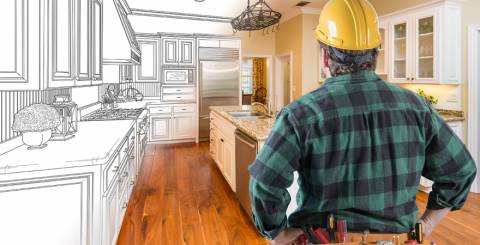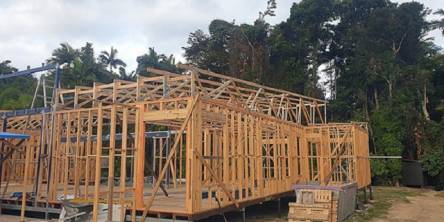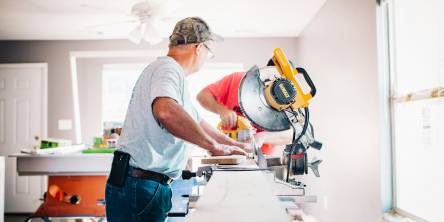Renovating an Old House? Here Are Some Challenges That You Might Face!

Homes aren’t just stacks of brick and cement. They are places where emotions are embedded in the walls; they are closed spaces where memories dwell. Dreams, hopes, and aspirations are born in homes. People have countless memories associated with their adobe. The aesthetics can become out of fashion, but the memories will never be outmoded. However, the brick and mortar structure sometimes might not withstand the test of time. It might wear due to weather or other factors. That’s when renovation or remodeling is an option.
If you want to remodel or renovate your home and keep the old-world charm intact, then renovating is a great idea. Old buildings might include traditional design features, a lot of spaciousness, and a good locational advantage, but renovating archaic abodes can be truly a task of Goliath. Why? Well, there can be many unprecedented; and unexpected hurdles in the way of renovating a home that is more than 30 years old. Some of such 6 challenges are listed below!
-
Small crevices and fissures in the foundation
One of the most evident and dreadful challenges is cracks in the foundation. Most often you can see visible cracks in the foundation that are more than 50 years old. The cracks are formed due to the water retention in the base or due to the settling soil below the building. To check for this, it is always best to appoint an experienced structural engineer who can check for the cracks and find a solution to the problem.
-
Abrasion due to moisture
One of the biggest problems in re-constructing old homes is the water seepage. In homes that are more than 30 years old, the water may seep from the roof, leaky plumbing lines, or the roof may damage the structure. Always consult a waterproofing consultant who can identify and seal the damaged walls with waterproofing compounds to control dampness. Don’t forget to replace the leaking pipes because they might be the biggest havoc that can pave the way for pest infestation.
-
Antique electrical wiring that has become a fire hazard
The electrical wiring of old buildings wasn’t made to take the load of modern appliances like air conditioners, geysers, microwave refrigerators, and so on. When you analyze the structure closely, you can find old electrical fittings that are unsafe or a fire hazard. The load calculation of the electrical wiring generally depends on the number of appliances, electrical fixtures, etc. that run parallel in the house. To avoid fire hazards or short circuits, and support all the appliances, change all the switchboards and incorporate adequate plug points in all areas of the home.
-
Leaky, worn-out plumbing lines
Old buildings are generally equipped with outdated galvanized plumbing that typically corrodes over a period of time. This increases the chances of leakage, which eventually paves the way for damage due to moisture. So, avoid this by replacing all the galvanized pipes with new PVC pipes.
-
Shoddy workmanship
Before you start the renovation work, thoroughly inspect the exteriors and interiors of the old building for signs of poor workmanship. Poor workmanship doesn’t just disfigure the aesthetics of your home, but it can also make the structure weak from the core. Identify these places and take adequate measures to rectify the same.
-
Archaic, outmoded layout
Although old homes are designed beautifully by considering the space-saving aspect, some old homes have outdated layouts that have nothing to do with maximizing space. You have to reorganize the space without tampering with the overall structure of the building. Avoid knocking down walls and appoint an interior designer to rework the layout to be more functional and spacious. Integrate features like open kitchens, elaborate foyer, and so on, and move towards the contemporary lifestyle.
The bottom line
Instead of DIYing everything on your own, it is best that you consider the top interior designers in a nearby city. Before you start, get your home inspected by a structural engineer or architect. Professionals can guide you to ensure the smooth execution of the renovation work. Besides getting professional guidance, always allot a budget and keep adequate funds for contingencies. Renovation of antique homes can result in many unforeseen expenses, so always be financially prepared to bear the expenses.
Similar Articles
When it comes to transforming your home, few projects offer as much impact as a kitchen remodel or bathroom renovation. For homeowners, both of these areas can benefit significantly from a professional touch.
AS 1684 is vital for ensuring the safety, stability, and compliance of timber-framed buildings in Australia. However, many professionals make mistakes when applying this standard, which can compromise the quality and integrity of a project.
When people think about insulation, they often associate it with keeping homes warm in the winter and cool in the summer. While temperature regulation is one of its primary functions, insulation offers a range of additional benefits that many homeowners overlook
Boost home energy efficiency with top renovation tips—insulation, smart appliances, HVAC upgrades & more. Save money & reduce environmental impact!
Have you ever looked up at your roof and wondered if it’s still in tip-top shape? Are you asking yourself whether those small cracks or worn-out tiles could lead to bigger problems down the line? If so, you’ve come to the right place.
Smart home remodel tips: splurge on countertops & flooring, save on decor & lighting. Balance budget & luxury for a stylish, functional space!
Discover the rising trend of roller shades in modern homes! Essential window coverings for a sleek, stylish look. Transform your space now!
Transform your outdoor space with stone veneer! Discover benefits, installation tips, maintenance, and creative ideas for enhancing curb appeal and durability.
Marble is a luxury and high-end material that imparts a sense of timelessness to any living space. From a white Carrara marble table to an intricately veined dark marble surface, its elegance and sophistication make it an incredible focal point in your living space.









